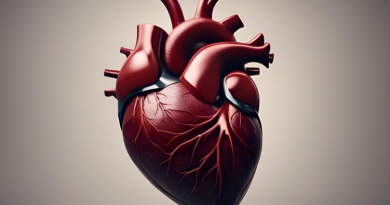Enduring pain: How much suffering is enough?
When faced with a painful event, people are often told to “hang in there” or “tough it out” as if there is value in the suffering—as if there is going to be some end that is worth suffering for. But if medicine provides a way to eliminate pain and suffering, would you “tough it out” or take this opportunity? What could possibly motivate anyone to endure suffering? And when is suffering enough to require intervention?
One potential argument is that some suffering can be endured (at least temporarily) in the name of love. We hear stories of the sick and elderly dying the day after their grandchildren’s wedding. Some people seem to believe missing a milestone or other special experience with family and friends could be a fate worse than suffering.
In fact, there are studies published stating that deaths cluster around important dates such as birthdays and holidays, suggesting that the prospect of some events may act as a “lifeline.”
Some thinkers believe that suffering can also be endured in the name of personal growth. Plato argues that pain is an unavoidable step in attaining true knowledge, much like how stepping into a bright room after having been in the dark can be painful and blinding.

Elisabeth Kubler-Ross, a psychiatrist, believed that growth that comes with recovering from suffering makes people compassionate and loving. In fact, she claimed that “the most beautiful people we have known are those who have known defeat, known suffering, known struggle, known loss, and have found their way out of the depths.”
Despite these prospects, suffering is still painful and, most would argue, undesirable. Few, if any, would argue that people with a broken leg should walk down the aisle in the name of love or that surgery should be undergone without anesthesia in the name of personal growth. We all seem to agree that pain should be eliminated in these cases.
However, not all instances of pain or suffering relief are met with wide agreement. For example, deep brain stimulation (DBS), which involves implanting an electrode in the patient’s brain to alter neural firing patterns, has been used to treat symptoms of severe Parkinson’s for decades.
Recently, scientists have been researching the effectiveness of DBS in alleviating the symptoms of mental disorders such as obsessive-compulsive disorder (OCD) and depression. Due to its invasive and experimental nature, the usage of DBS to treat OCD has been restricted to a small subset of patients.
But determining treatment plans for mental illness can be particularly challenging because it is often invisible, relying on self-reported symptoms and severity for diagnosis. For disorders like these, how will future clinicians determine who will eventually qualify for treatment? How can we determine who is suffering “enough” to have access to this technology versus who should just “tough it out?”
As medicine aims to alleviate patient suffering, understanding the different ways people conceptualize suffering and where along the spectrum intervention is deemed appropriate may be important to providing “good” medical care. And, ultimately, this increased understanding of suffering will help us know when to tell people to “hang in there” and for how long.
-By Julia Jung, Health, Humanism and Society Program scholar with Rice University and Baylor College of Medicine



